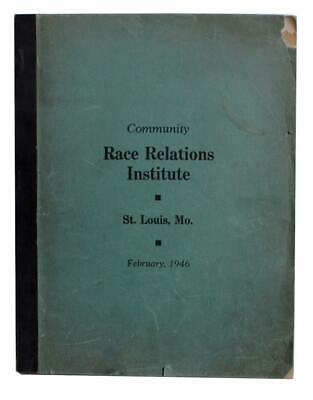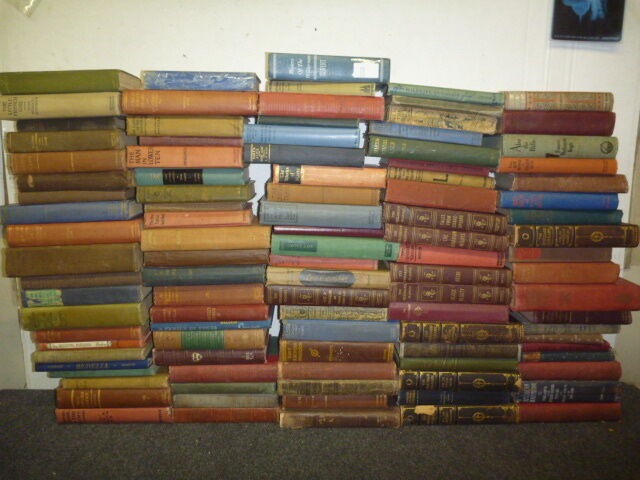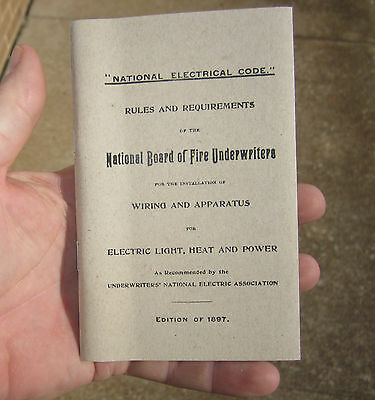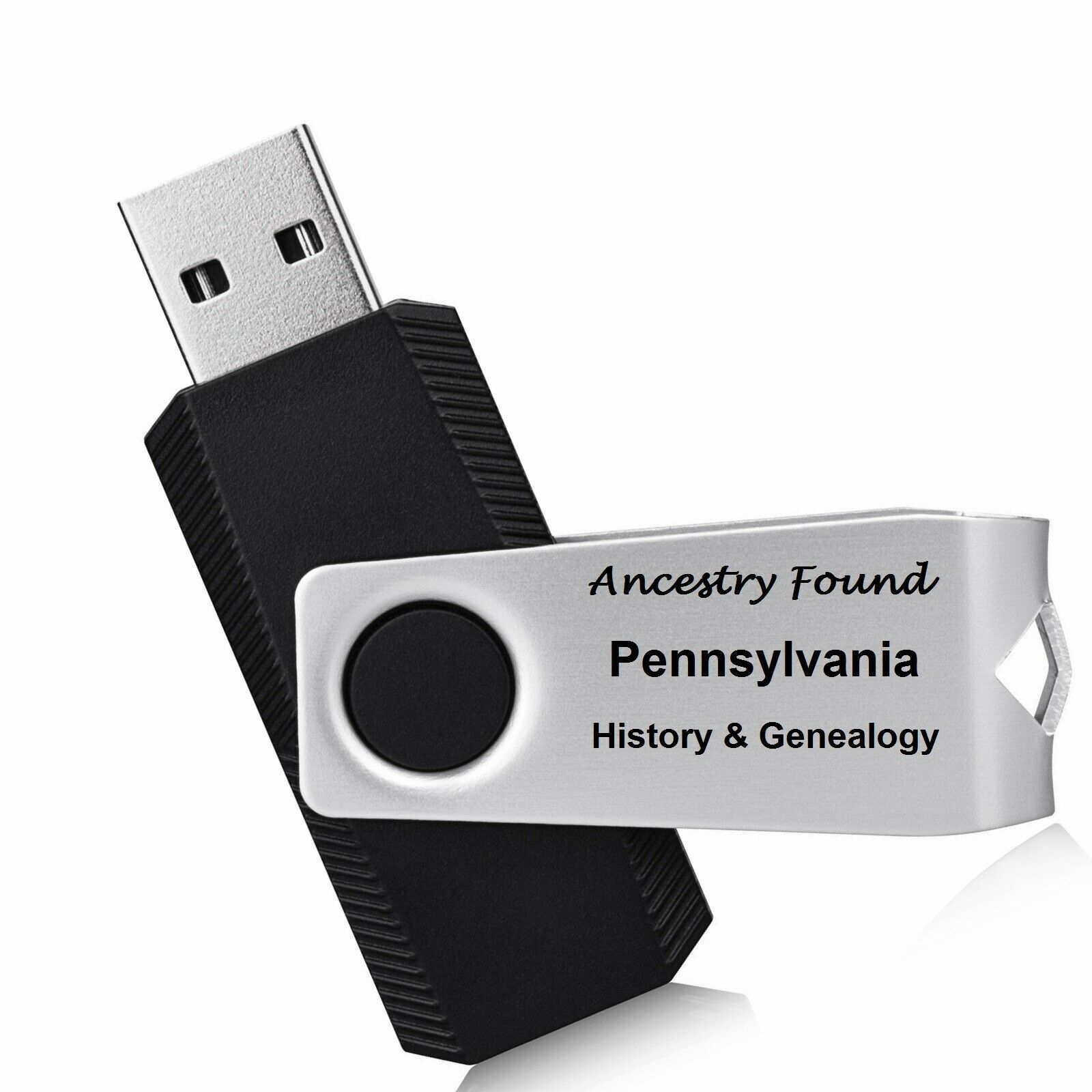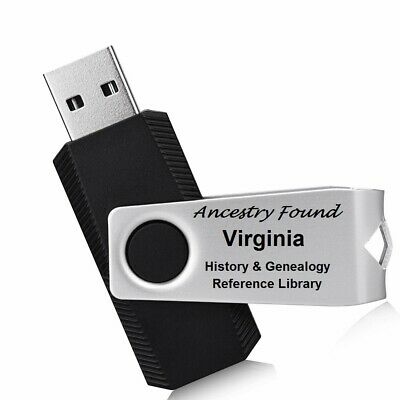-40%
Charles S. Johnson African American Race Relations Institute St. Louis 1946
$ 633.6
- Description
- Size Guide
Description
Charles S. Johnson African American Race Relations Institute St. Louis 1946Charles S. Johnson African American Race Relations Institute St. Louis 1946
Click images to enlarge
Description
[African Americana][Race Relations]
Johnson, Charles S. et al.
Community Race Relations Institute. St. Louis, Mo. February, 1946. [Cover title].
St. Louis, Missouri: [Committee of the Community Race Relations Institute], 1946. 10¾” x 8¾”. Stapled wrappers. Reproduced typescript printed rectos only. [4], 154A [i.e. 155] leaves. Very good: wrappers moderately worn, scuffed and dust soiled; wrappers and a few leaves with small chips; text lightly toned.
In February, 1946, leaders from thirty-four civic, welfare, religious and labor organizations met at the downtown Y.M.C.A. in St. Louis with the goal of improving that city's race relations. This is the report of those meetings.
The Community Race Relations Institute (“CRRI”) grew out of the Race Relations Department of the United Church Board for Homeland Ministries. According to the Amistad Research Center, the department's mission was to
“define problem areas related to race relations in the United States, to develop programs and techniques designed to promote constructive action, and to work toward relieving areas of tension utilizing, wherever possible, local resources.”
The department, housed at Fisk University, was started in 1942 and headed by the renowned sociologist, Charles S. Johnson. In 1945, the board of St. Louis' Y.W.C.A. began exploring the possibility of holding a conference to improve race relations, and turned to the Race Relations Department for help. The next year, from February 12
th
to the 17
th
a series of nationally respected speakers in the areas of economics, health, sociology, housing and other topics addressed 250 conferees who, according to the book, were
“already working in some phases of race relations and desirous of doing a better job.”
Two sessions were open to the public, and the book reported that over 2,000 people attended.
The book begins with a mayoral proclamation which read, in part,
“there is no room . . . for those who exclude their fellow citizens because of race, creed, or national origin, or for those who misguidedly give expression to patriotism in racial and religious bigotry.
” What follows is a compilation of the transcripts of main speeches as well as notes and summaries of the group discussions that were compiled by volunteer note takers. There's a detailed report regarding how the institute came about as well as some of the takeaways such as the importance of working towards desegregation and including
“members of minority groups . . . on the policy making boards of all civic, political, educational and social agencies.”
Charles S. Johnson's orientation speech takes up 20 pages and emphasized the need to create structures for change as a well as
“a will to translate this blueprint into action, a confidence that the obstacles are not insuperable, and some guides for enlisting wider support in the community.”
E. Franklin Frazier spoke on how to integrate African Americans into the modern community and a young Robert C. Weaver spoke on race relations and earning a living. Weaver would go on to be the first African American appointed to a cabinet position, serving as the secretary for HUD under LBJ. Another person to speak on earning a living was Sara E. Southall a black woman who spent 28 years in industrial relations at International Harvester, becoming an expert on women and African Americans in the workforce. Other discussions included integrated living arrangements, the role of religion, civil rights generally and more.
An artifact of an outstanding effort to improve race relations, densely packed with a wealth of original source material. OCLC locates six copies, all but two in Missouri.
This item is offered by Langdon Manor Books, LLC, antiquarian booksellers. Please do not hesitate to contact us for additional information and/or photos and we will respond promptly. We package our items carefully, ship daily, and have a no hassle returns policy--your satisfaction is guaranteed. We are members of the Antiquarian Booksellers' Association of America (ABAA), the International League of Antiquarian Booksllers (ILAB) and the Independent Online Booksellers Association (IOBA) and adhere to their rules of ethics.
ALL ITEMS ARE GUARANTEED IN PERPETUITY TO BE AUTHENTIC AND ORIGINAL
Terms and shipping:
Payment is required within 3 days of purchase. Shipping in the continental
United States
, with delivery confirmation is .00. International shipping is via the eBay global shipping program.
International buyers: if the shipping price appears extreme, please let us know the posted price, as we are occasionally able to find a cheaper option.
eBay is now directly charing sales tax for a number of states--we do not collect it, and eBay distributes the taxes to state entities.
Your satisfaction is guaranteed.
We allow returns for any reason, our feedback is perfect, and we will absolutely make things right if you are disappointed with your purchase.
Get images that
make Supersized seem small.
Showcase your items with Auctiva's
Listing Templates!
THE simple solution for eBay sellers.
